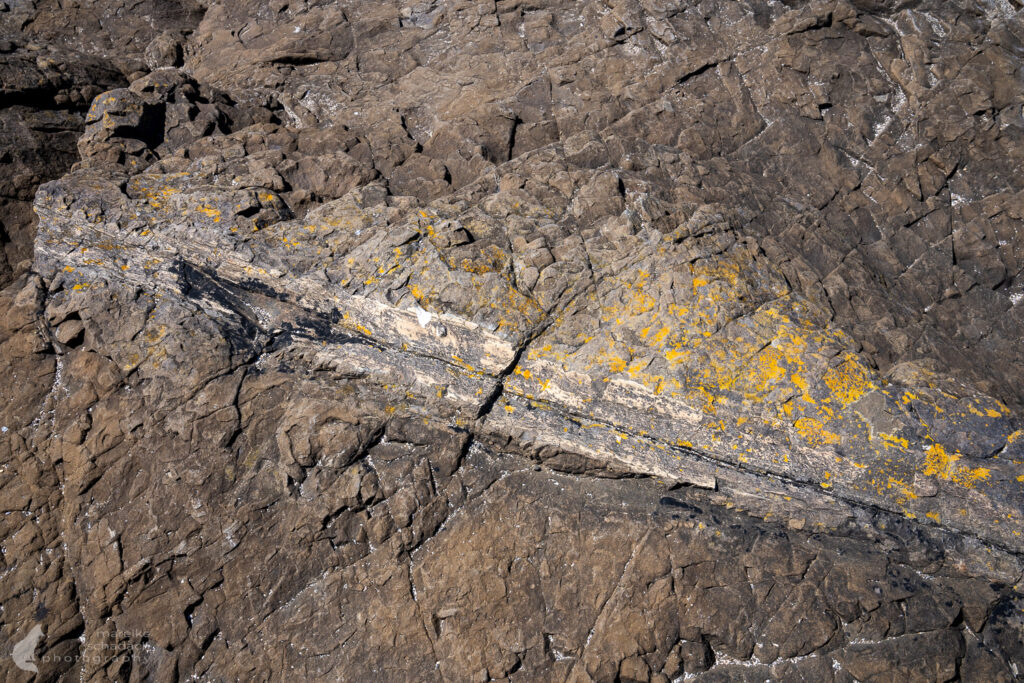New Zealand. Do you like walking in ancient forests? Then you've come to the right place. This forest is, believe it or not, over 170 million years old. Dinosaurs lived here and probably ate the leaves off the trees: the fossilized forest of Curio Bay. Dating back to the Jurassic period, this subtropical forest is the geological treasure of the Catlins Coast in the south of New Zealand's South Island and offers a unique journey into the past.
Unassigned, unpaid advertising. The article contains affiliate links.
Why is the Curio Bay Petrified Forest unique?
- These are not fossil fragments, but clearly recognizable tree structures.
- The fossils date back to the Jurassic period, when dinosaurs ruled the earth.
- The forest is one of the best preserved fossil forests in the world and offers a rare insight into the subtropical ecosystem of Gondwana.



A subtropical petrified Forest
First things first: the petrified forest can only be seen up to two hours before/after low tide. Click here for the tide table.. If you stand at the viewing platform at the right time, you will first see a large area of rocky seabed. I only saw the petrified tree trunks and stumps when I went down the stairs and stood right in front of them. But then my eyes got bigger and bigger. I recognized several lying tree trunks as well as tree stumps and roots. I could even see the wood fibers and sometimes annual rings.
Around 170 million years ago during the Jurassic period, the region around Curio Bay was part of a subtropical, warm climate. At that time, the current location was close to Antarctica and the continents were still part of the supercontinent Gondwana. The forest consisted of primeval conifers, ferns and palm-like plants. These plants grew in a swampy, volcanically active area. Grass and flowering plants did not exist at that time.



Destruction of the Forest by volcanic Eruptions and the Fossilization Process
A series of volcanic eruptions in the region buried the forest under volcanic ash and sediment. This process happened several times, with each new eruption depositing fresh ash and lava over the vegetation. The trees and plants were thus preserved.
The actual process of fossilization took place over millions of years:
- Deposition of minerals: water seeping through the volcanic deposits was rich in silica and other minerals.
- Replacement of organic matter: Minerals were deposited in the cells of the trees and gradually replaced the organic materials.
- Preserving the structure: This process preserved fine details such as annual rings, bark and roots - but in a stony form.
Over millions of years, the overlying rock layer was removed by erosion, finally exposing the petrified forest on the coast.

“Forest Creatures" - Yellow-eyed Penguins in Curio Bay
In Curio Bay, where the petrified forest is located, you have a good chance of spotting yellow-eyed penguins (hoiho). These rare penguins come ashore in the late afternoon or evening. Be quiet and keep at least 50 meters away so as not to disturb the penguins. Seals and sea lions can also often be observed on the rocks.

Practical Information for your Visit
The nearby Tumu Toka Curioscape Visitor Centre offers an interactive exhibition about the petrified forest of Curio Bay and the history of the Catlins. You can also find information about the wildlife and nature conservation in the region. There is a café and a souvenir store. There is a campsite right next to the visitor center.
A short, paved path leads from the parking lot to a viewing platform with a view of the fossilized remains of the ancient forest. Information boards at the viewing point explain the history and significance of the petrified forest. At low tide, access to the petrified forest is via the steps of the viewing platform.

Book Recommendations for New Zealand
You want to know where the journey goes? Then I can recommend these books*.
You can order the books with a click on the pictures on Amazon. If you buy a product via an affiliate link, I get a small commission, and you help me to keep filling Fernweh-Motive with interesting articles. The product will not be more expensive for you, and you will do me a huge favor.
Do you want to know when there are new articles on my blog? Then follow me on Facebook, Pinterest or Instagram. I would also be very happy if you share my article with your friends.
Recommendations for further Reading
Do you love forests - whether petrified or alive - as much as I do? Then you'll definitely be interested in the Fanal laurel forest, which you can find out more about in my article Photographing Madeira – the best Photo Locations for Nature Lovers and my article Leave No Trace! Principles for Nature-friendly Outdoor Life.











